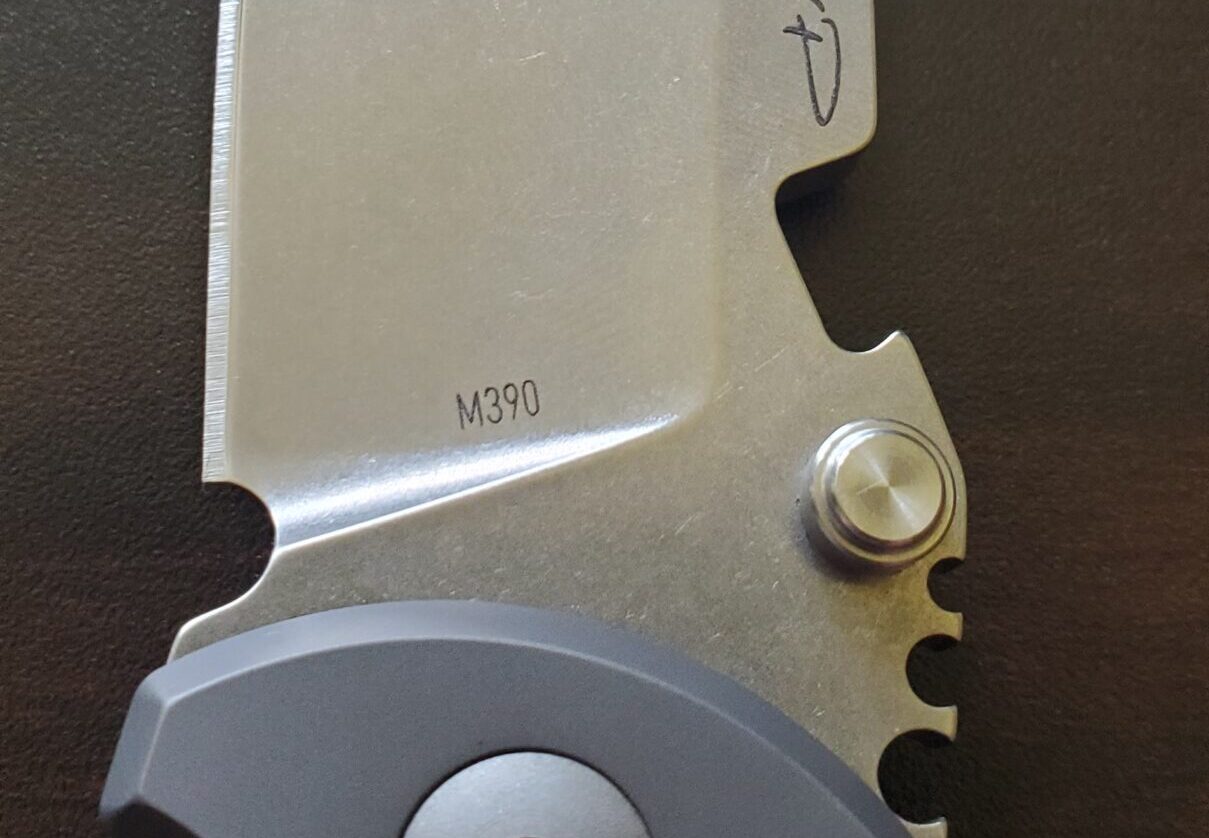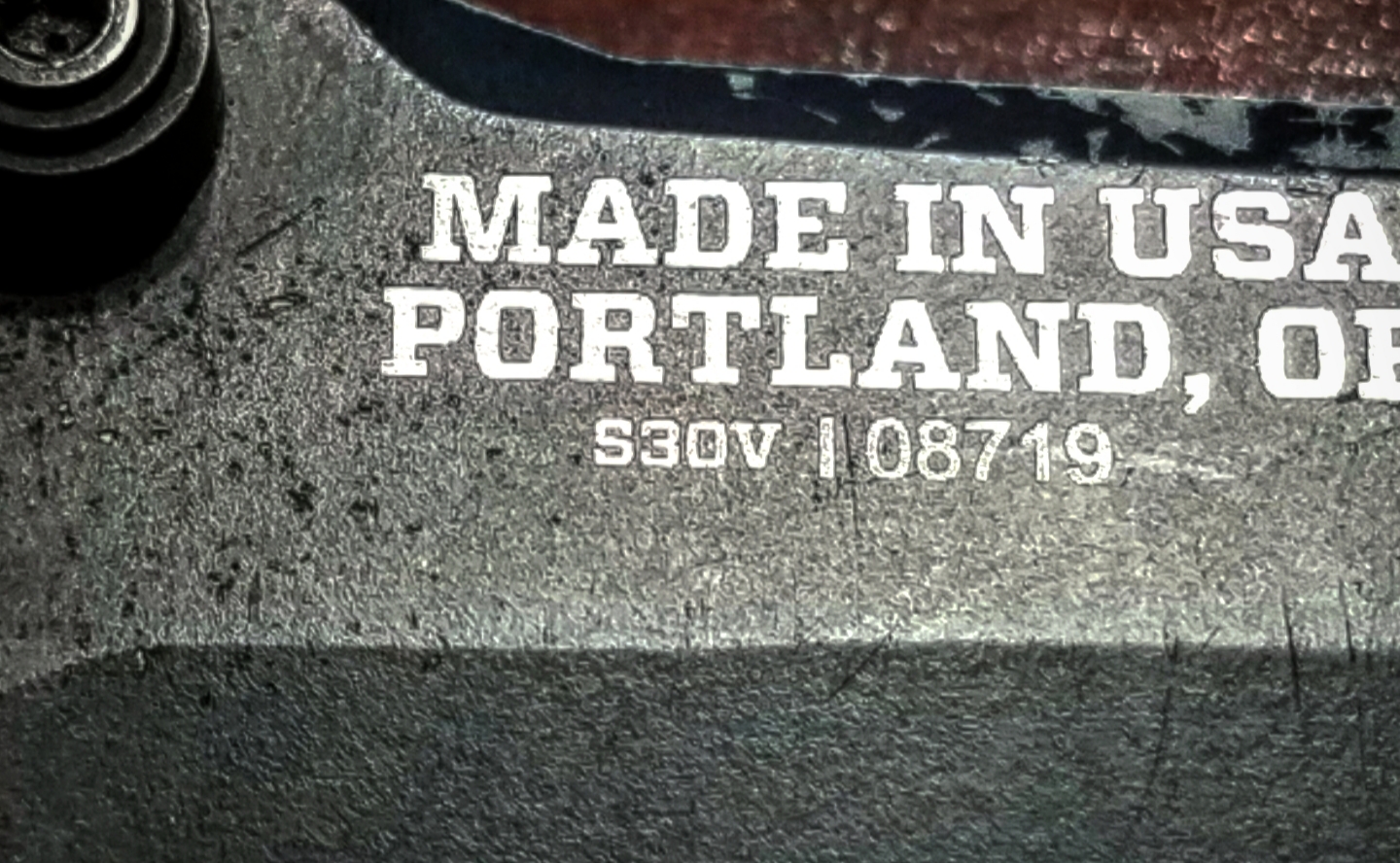154CM Steel – The American equivalent of the ATS-34 premium grade stainless steel made exclusively in Japan, owned by Hitachi Steels. SHOP 154CM Knives
420J2 Steel – An ideal knife blade that will be subject to high temperatures, humidity and corrosives such as salt. Does not require much care or maintenance. SHOP 420 Steel Knives
440A Steel – A high-carbon stainless steel used in many American production knives. SHOP 440 Steel Knives
1055 Carbon Steel – 1055 steel is right on the border between a medium and a high carbon steel, with a carbon content between 0.50%-0.60% and with manganese between 0.60%-0.90% as the only other component. The carbon content and lean alloy make this a shallow hardening steel with a quenched hardness between Rc 60-64 depending on exact carbon content. These combination of factors make this one of the toughest steels available because, when quenched, it produces a near saturated lathe martensite with no excess carbides, avoiding the brittleness of higher carbon materials. This steel is particularly suited to applications where strength and impact resistance is valued above all other considerations and will produce blades of almost legendary toughness. SHOP 1055 Steel Knives
1095 Steel – Plain carbon steel used in knife making. Proven to be one of the most popular steels. SHOP 1095 Steel Knives
4116 Krupp Stainless Steel – 4116 is a fine grained, stainless steel made by Thyssen Krupp in Germany and is used for hygienic applications (medical devices and the pharmaceutical industry) and food processing which make it a superb material for kitchen cutlery. The balance of carbon and chromium content give it a high degree of corrosion resistance and also impressive physical characteristics of strength and edge holding. SHOP 4116 Steel Knives
Alloy Steel – Steel that has been enhanced with additional elements (chromium, molybdenum, vanadium, nickel) is called alloy steel. SHOP Alloy Steel Knives
ATS-34 Steel – A premium grade of stainless steel made exclusively in Japan, owned by Hitachi Steels. Commonly used in high quality tactical folding knives and collectible knives. The American equivalent is 154CM steel. SHOP ATS-34 Steel Knives
AUS-8 Steel – A high carbon, low chromium stainless steel that is a very good compromise between toughness, strength, edge holding and resistance to corrosion. SHOP AUS-8 Knives
Carbon – An element present in all steels. More carbon increases hardness. SHOP Carbon Steel Knives
Chromium – A major element in martensitic stainless steel. It improves hardenability, wear and corrosion resistance. SHOP Chromium Knives
CPM S30V – Commonly referred to as S30V was introduced by Crucible in 2002 in response to knife industry demand for a steel with more wear, corrosion resistance and toughness. It has added Vanadium for higher wear resistance and Molybdenum for better pitting resistance. It has superb edge retention because it resists edge chipping. Contents: Carbon 1.45%, Chromium 14%, Molybdenum 2%, Vanadium 4%. SHOP S30V Knives
D2 Steel – A high-carbon, high-chrome tool steel often used for blanking dies. This steel has excellent edge holding ability but is very difficult to process. SHOP D2 Steel Knives
High-Carbon – A steel with .5 Carbon or more. The term high carbon steel is often used to mean a non stainless steel; this is incorrect, however, because all stainless steel used in knifemaking is high carbon. SHOP High Carbon Steel Knives
High-Carbon Stainless – Any stainless steel used to make a knife blade must be high carbon to make a decent knife. Any high carbon stainless steel will stain, though less than other steels. SHOP High Carbon Stainless Knives
High-Speed Steel – Steels designed to machine other steels. These machine tools will hold an edge even when rendered red-hot by friction. SHOP High Speed Steel Knives
High Strength Low Alloy Steels – Known as HSLA steels are pretty new. They have been processed to have ore strength than carbon steels of the same weight.
Laminated Steel – Tool steel with a very hard core, but with outer areas made of softer material that gives great strength. Harry Morseth began the use of this material in the U.S. about 1946. It had been used for centuries in Scandinavia and Japan. SHOP Laminated Steel Knives
M-2 Steel – High-Speed Steel that works well in blades requiring a hardness rating of 62-66 Rc. First used in American Cutlery kitchen knives and folders by Gerber Blades in the 1960s. Content: Carbon 85%, Tungsten 6.35%, Molybdenum 5.0%, Chromium 4.0%, Vanadium 2.0%.
M-4 Steel – A high-speed steel that’s very hard to work, but it makes a great knife with excellent edge retention. Very much like M-2. Content: Carbon 1.3%, Vanadium 4.0%.
Martensitic Steel – Steel that is capable of being brought to a very hard condition is called martensitic steel. This steel is best suited for knife blades. SHOP Martensitic Knives
Molybdenum – An element added to steel to improve hardenability, tensile strength and resistance to corrosion and pitting. SHOP Molybdenum Knives
Nickel – An alloy addition that improves steel’s toughness, hardenability and corrosion resistance. Nickel is a major element in steel used for kitchen cutlery and dive knives.
Powdered Metal – A process used to make shaped metal pieces. Fine metal particles are molded under pressure and then fused under high heat. Also known as sintered metal. SHOP Powdered Steel Knives
S30V Steel – S30V steel blades are harder and more wear resistant than standard 440C stainless steel. Also has above average edge retention. SHOP S30V Knives
Sandvik 12C27 – Stainless steel made in Sweden. Known as a premium steel. SHOP Sandvik Steel Knives
San Mai III – An expensive, traditional style Japanese laminate. Constructed from two different steels, this steel is 25% stronger than the incredibly tough AUS 8A steel. A hard high carbon stainless steel forms the core and edge of the blade. Two layers of tough, spring tempered stainless steel are added to support and strengthen the blade. The final blade has more elastic and better edge holding capabilities than standard stainless steels. SHOP San Mai Knives
SK-5 High Carbon Steel – SK-5 is the Japanese equivalent of American 1080, a high carbon steel with carbon between 0.75%-0.85% and 0.60%-0.90% manganese. As quenched, it has a hardness near Rc 65 and produces a mixture of carbon rich martensite with some small un-dissolved carbides. The excess carbide increases abrasion resistance and allows the steel to achieve an ideal balance of very good blade toughness with superior edge holding ability. Due to these characteristics, this grade of steel has been used traditionally for making a variety of hand tools, including chisels and woodcutting saws, and has stood the test of time and use over many years in many countries. SHOP SK-5 Steel Knives
Spring Steel – Any tool steel that will remain flexible when properly heat-treated. SHOP Spring Steel Knives
Stainless Steel – The common term “stainless” is misleading. More accurately, it should be called “stains less” because it is not “stain free.” In certain environments, any steel with carbon will rust. Stainless steel’s corrosion-resistant properties make it a good material for knife blades. SHOP Stainless Steel Knives
Titanium – A material that can be both hard and tough; widely used to armor jet fighters. About 1/3 lighter than steel. Very useful for knife parts, but will not hold an edge so is not useful as a blade. SHOP Titanium Blade Knives
Titanium Nitride – A corrosion-resistant, silvery, metallic chemical element that occurs in rutile and ilmenite. Its strength and light weight make it useful in the manufacture of alloys for the aerospace industry. SHOP Titanium Nitride Knives
Tungsten – A hard, lustrous gray metallic chemical element with a very high melting point. It’s used in various high-temperature alloys, lamp filaments, and high-speed cutting tools. SHOP Tungsten Blades
Vanadium – A material added to steel to improve hardenability and promote fine grain, which is an important factor in wear resistance. SHOP Vanadium Knives


